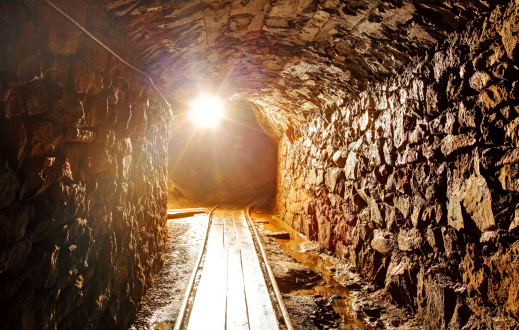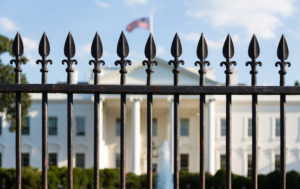
Black lung disease is increasing, but fewer miners can successfully claim benefits.
A powerful explosion ripped through the Upper Big Branch coal mine in West Virginia in 2010, sending an inferno through two and one-half miles of underground mines 1,000 feet below the surface. Twenty-nine coal miners were killed instantaneously. Yet as horrific as this catastrophe was, the death toll from the explosion is eclipsed each year by coal miners dying from a preventable illness: black lung disease. And unlike other victims of workplace hazards, miners with black lung disease currently lack a fair forum in which to obtain compensation for their illness.
Black lung disease afflicts miners when they breathe excess amounts of coal dust, causing nodules to form in their lungs. This formation process causes internal scarring and stiffness, slowly reducing lung function and making breathing difficult. Miners suffering from the disease are overexerted with even the simplest tasks, such as walking up stairs. While black lung disease can be effectively prevented through proper ventilation systems decreasing the concentration of coal dust in mines, the disease’s pervasiveness is increasing among coal miners, especially younger miners.
Hundreds of workers succumb to the ravages of black lung disease each year, with 10,000 fatalities estimated between 1996 and 2005. As a result, Congress created a federal workers’ compensation program to provide assistance to miners stricken with the disease. Unfortunately, this Black Lung Benefits Program, overseen by the United States Department of Labor, fails to provide miners with a fair forum for resolving their claims. The rates at which claimants obtain compensation have hit new lows – about 14% on initial claims, and even lower after appeals – at the same time that black lung’s prevalence appears to be on the rise.
Low success rates, of course, do not conclusively show that the program is unfair to claimants. Low rates alone could equally support the conclusion that too many claimants are applying for benefits without the proper qualifications, wasting resources that could be focused on more deserving claims. Yet it is clear that there are procedural aspects of the Labor Department’s black lung program that do unfairly give an advantage to mine operators when their former employees seek benefits.
Anyone who applies for benefits under the Black Lung Benefits Program must submit to an adversarial process overseen by Labor Department administrative law judges. The adversary, of course, is their former employer, the very entity that would be responsible for the former worker’s lifetime medical expenses if the miner’s claim were to succeed. As miners often represent themselves without attorneys, they are stuck navigating a complex hearing and appeals process against an opponent with vastly superior resources.
The Labor Department’s Office of Administrative Law Judges advises claimants that proceedings “vary widely in complexity.” That office also instructs miners that “in many instances it may be wise to obtain legal counsel.” Not only does the Labor Department believe it is important for claimants to have representation, but apparently so does Congress, as indicated by its inclusion of an attorney’s fee provision in the statute setting up the black lung program.
Unfortunately, the attorney’s fee provision has not been enough to entice lawyers to represent miners. While the Labor Department does not collect data on claimant representation, officials have cited “claimants’ lack of representation, particularly in the early stages of a claim, as a significant barrier to successful claims.”
Attorneys report that the lack of financial incentives is the main reason they decline to take on black lung benefits cases. While the program does include a fee provision, those fees are contingent on success. If the claimant is unsuccessful, then the attorney is not permitted to charge any fee for legal services.
Furthermore, litigating a black lung benefits case is often a costly and potentially lengthy process. The process takes three years on average, from the initial filing to resolution. The average case costs approximately $18,000, while those lasting over seven years normally cost more than $70,000. These costs arise predominantly from the need to develop evidence, especially from medical experts.
Medical evidence, including exams and medical expert opinions, is a crucial factor in awarding benefits. This evidence not only is needed to determine whether a claimant has black lung disease, but also whether mining employment actually caused a miner’s disability. In the adversarial process, mine operators often obtain multiple medical opinions to oppose miners’ claims for benefits.
Current science is not able to make a medical distinction between black lung disease caused by coal dust and lung disease caused by smoking. When a miner who smoked seeks benefits, mine operators argue that smoking, not breathing coal dust, caused the disease. Determining whether the miner’s disease is caused by coal dust or smoke inhalation is a common challenge in administrative proceedings. In areas where underground coal mining is prevalent, so too is smoking. West Virginia and Kentucky have the vast majority of underground coal mines in the nation, and they also have the “distinction” of having the two highest smoking rates.
How do the medical examiners provided by the Labor Department to claimants who lack their own doctors stack up against the doctors paid for by the mining companies? Not well at all, according to a 2009 report by the U.S. Government Accountability Office (GAO). The GAO found that “mining company doctors are usually better credentialed and produce lengthier and more sophisticated medical reports and evaluations.” Furthermore, the doctors the government provided to miners “did not provide claimants with sound evidentiary support for their cases.”
The lack of claimant representation and access to adequate medical evidence significantly hinders the fair determination of benefits. Without a lawyer and sophisticated expert witnesses, claimants struggle to navigate the process while being opposed by experienced practitioners with superior resources.
In proposing solutions to this problem, the primary goal should not be to increase the success rate of claimants or unfairly disadvantage mine operators. Rather, remedies should seek to ensure operators can effectively defend themselves while also preventing miners from being overwhelmed by superior resources.
Two remedies that should be considered include creating a settlement provision within the black lung program and adding a requirement to compel the disclosure of any non-testifying medical expert evidence prepared for trial.
Authorizing the parties to settle claims would address concerns about cost, duration, and uncertainty. It may entice greater legal representation of miners through the potential for quick and efficient resolution of claims, which will create a significant decrease in the legal costs for both parties. Whether settlement will actually occur is an empirical claim that cannot be adequately assessed before implementing a settlement provision. But giving both parties an opportunity for a quick and relatively inexpensive resolution would likely prompt at least some operators and claimants to settle. Claimants will be in a better position to acquire some form of payment as opposed to the current high rate of complete lack of compensation.
Given that medical evidence is often the determinative factor in black lung compensation proceedings, operators with superior resources are currently able to “shop around” to find medical opinions that support their position while withholding non-testifying expert evidence. Enacting a rebuttable presumption that parties must disclose all opposing party medical evidence prepared for trial, including evidence parties do not intend to use, would give claimants better access to crucial medical evidence without raising the litigation costs for either party. The Department of Labor has recently acknowledged this problem and stated that it hopes to propose evidence disclosure regulations by January 2015.
Creating a settlement provision and revising the expert evidence disclosure rule are important preliminary steps toward removing systematic procedural barriers facing miners in claiming benefits. These changes will provide the foundation for a fairer determination process, one that allows miners to articulate their legal positions better while not hampering operators’ efforts to defend themselves. As coal miners continue to suffer from black lung disease at increasingly alarming rates, a fair determination process is integral to justly resolving their claims.
Brandon Kenney is an Editor for The Regulatory Review.



